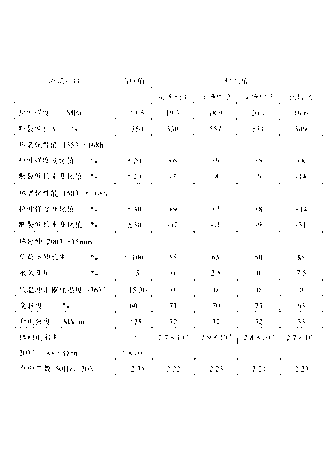Natural silane cross-linked polyethylene cable material capable of resisting 110 DEG C
A natural cross-linking and polyethylene technology, applied in the direction of insulating cables, cables, circuits, etc., can solve problems such as limitations, and achieve the effects of fast cross-linking speed, widening application range, and excellent anti-aging performance
- Summary
- Abstract
- Description
- Claims
- Application Information
AI Technical Summary
Problems solved by technology
Method used
Image
Examples
Embodiment 1
[0019] It is composed of grafted A material component and catalytic B material component in a weight ratio of 95:5, and the grafted A material component is composed of the following raw materials in parts by weight: 50 parts of metallocene linear low density polyethylene, double 20 parts of peak medium-density polyethylene, 30 parts of low-density polyethylene, 0.3 parts of dicumyl peroxide as initiator, 0.45 parts of polycarbodiimide as anti-precrosslinking agent, and bis(3 , 5-di-tert-butylphenyl) pentaerythritol diphosphite and (1,2,2,6,6-pentamethylpiperidinol) methacrylate mixed in a weight ratio of 2:1 mixture 0.3 2 parts, silane coupling agent i.e. vinyltriethoxysilane 2 parts; The B material component of catalysis is made up of the raw material of following parts by weight: 100 parts of low-density polyethylene resins, organic sulfonic acid catalyst i.e. tetrapropyl naphthalene sulfonate 1.5 parts of acid, 1.8 parts of tris(2-methoxyphenyl) bismuth as organic bismuth c...
Embodiment 2
[0021] It is composed of grafted A material component and catalytic B material component in a weight ratio of 90:10, and the grafted A material component is composed of the following raw materials in parts by weight: 70 parts of metallocene linear low density polyethylene, double 30 parts of peak medium density polyethylene, 0.1 part of benzoyl tert-butyl peroxide and 0.3 part of dibenzoyl peroxide as initiator, 0.05 part of ethylene glycol diglycidyl ether and polyvinyl alcohol as anti-precrosslinking agent 0.05 parts, the first antioxidant is bis (3,5-di-tert-butylphenyl) pentaerythritol diphosphite and (1,2,2,6,6-pentamethylpiperidinol) methacrylate 0.6 parts of a 2:1 mixed mixture by weight, 1 part of vinyltrimethoxysilane as a silane coupling agent, 1 part of vinyltrimethoxysilane oligomer and vinyl tris(2-methoxyethoxy base) 2 parts of silane; the catalyzed B material component consists of the following raw materials in parts by weight: 100 parts of low density polyethyl...
Embodiment 3
[0023] It is composed of grafted A material component and catalyzed B material component at 80:20, and the grafted A material component is composed of the following raw materials in parts by weight: 50 parts of low density polyethylene, bimodal medium density polyethylene 50 parts, the initiator is 0.1 part of dibenzoyl peroxide, the anti-precrosslinking agent is 0.5 part of polyvinyl alcohol and the first antioxidant is bis (3,5-di-tert-butylphenyl) pentaerythritol diphosphite 0.46 parts of the mixture of ester and (1,2,2,6,6-pentamethylpiperidinol) methacrylate in a weight ratio of 2:1, the silane coupling agent is vinyltrimethoxysilane 1.5 parts of polymer; the B material component of catalysis is made of the following raw materials in parts by weight: 100 parts of low density polyethylene resin, 1 part of dodecylbenzenesulfonic acid catalyst, organic bismuth catalyst three ( 1 part of 2-methoxyphenyl) bismuth, the second antioxidant is 1,3,5-tris(4-tert-butyl-3-hydroxy-2,6...
PUM
 Login to View More
Login to View More Abstract
Description
Claims
Application Information
 Login to View More
Login to View More - R&D
- Intellectual Property
- Life Sciences
- Materials
- Tech Scout
- Unparalleled Data Quality
- Higher Quality Content
- 60% Fewer Hallucinations
Browse by: Latest US Patents, China's latest patents, Technical Efficacy Thesaurus, Application Domain, Technology Topic, Popular Technical Reports.
© 2025 PatSnap. All rights reserved.Legal|Privacy policy|Modern Slavery Act Transparency Statement|Sitemap|About US| Contact US: help@patsnap.com

